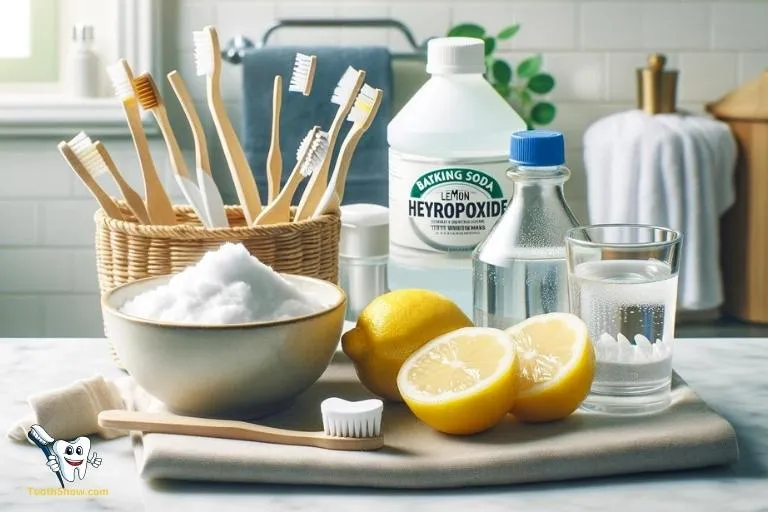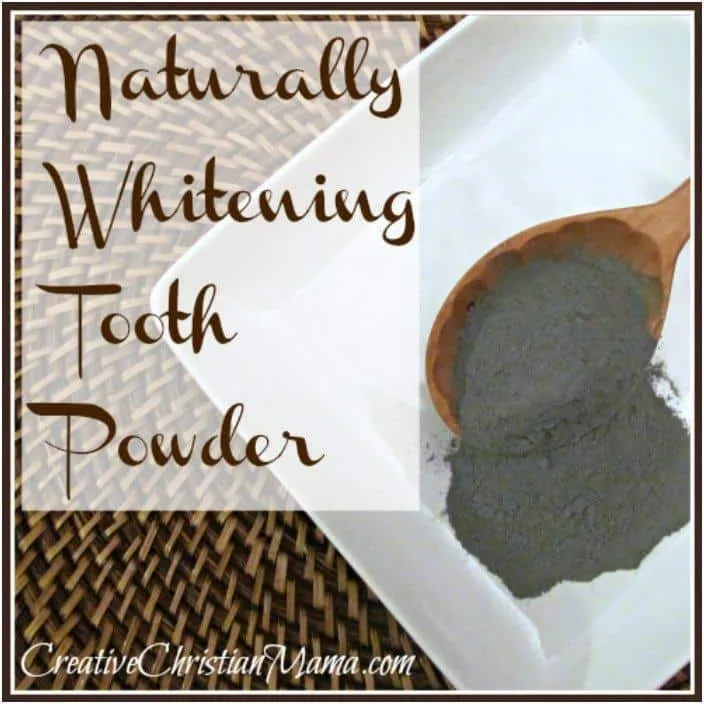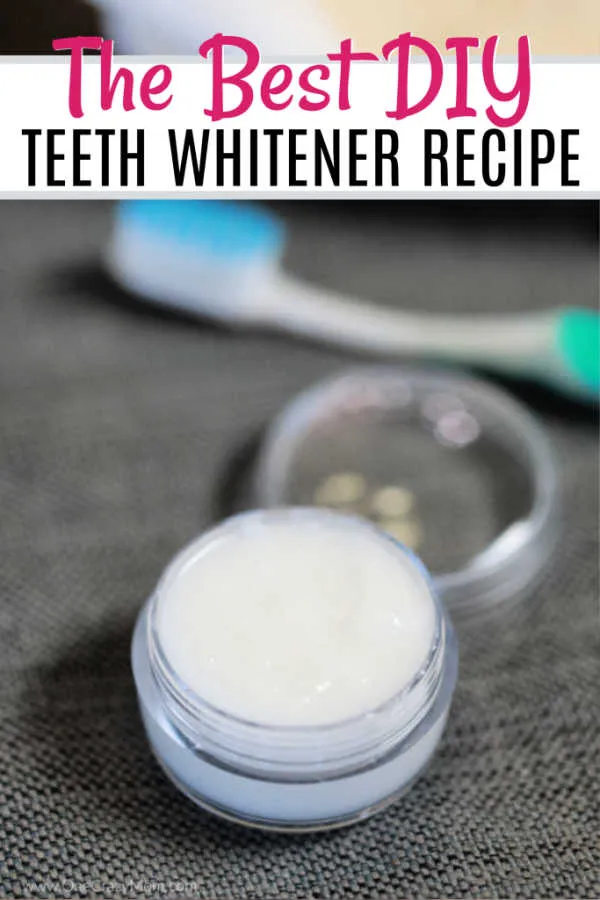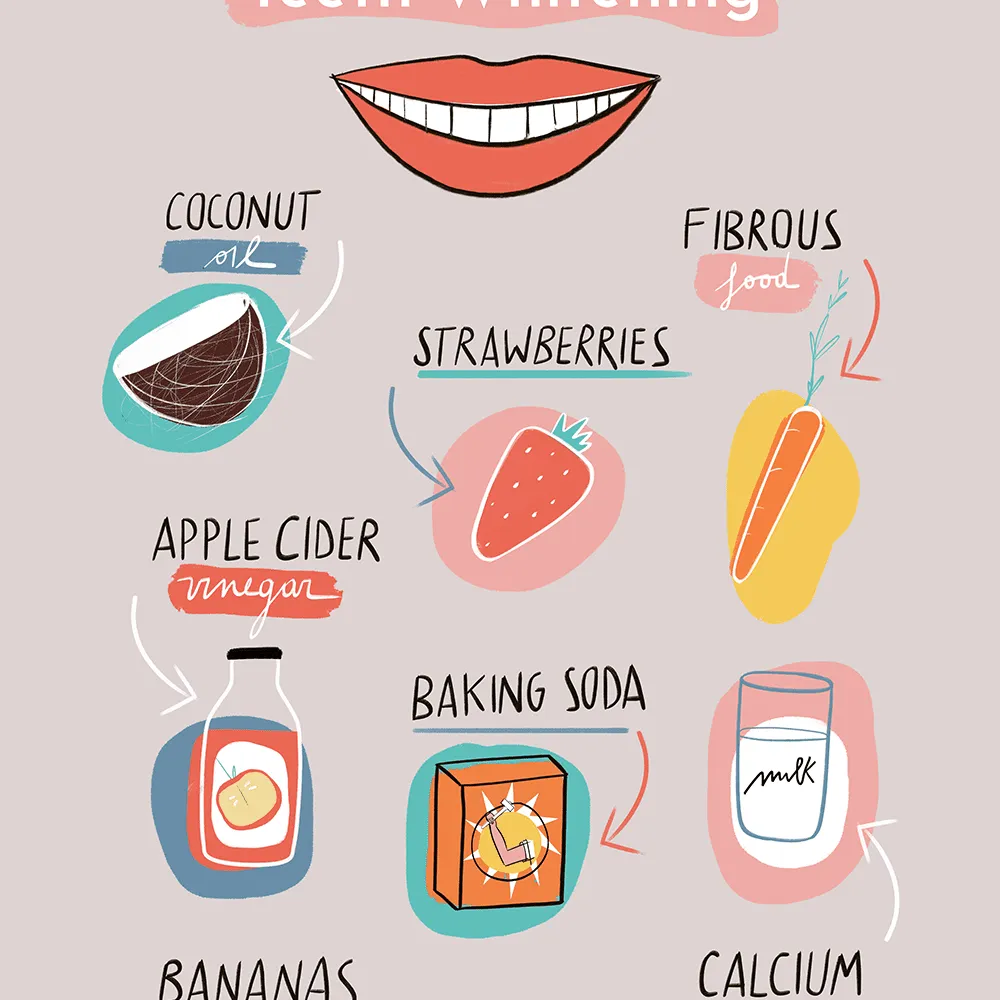The Truth Behind Teeth Whitening Home Recipes
A bright, white smile is often considered a sign of health and beauty, leading many to seek out effective teeth whitening solutions. While professional treatments offer significant results, the cost can be prohibitive. This has spurred interest in teeth whitening home recipes, promising a more affordable and accessible approach. However, it’s crucial to approach these DIY methods with both enthusiasm and caution. The effectiveness of home remedies varies, and some ingredients can potentially harm tooth enamel if used improperly. This article will delve into the science behind popular teeth whitening recipes, their effectiveness, potential risks, and how to maximize your results safely.
Understanding Tooth Discoloration
Before exploring teeth whitening home recipes, it’s important to understand why teeth become discolored in the first place. Tooth discoloration occurs through two main processes: extrinsic and intrinsic staining. Extrinsic stains affect the enamel surface, often caused by the foods, drinks, and habits that come into direct contact with teeth. Intrinsic stains, on the other hand, originate from within the tooth structure, sometimes due to aging, medications, or dental trauma. Understanding the type of staining you have can help you choose the most suitable teeth whitening home recipes. For example, extrinsic stains are usually more responsive to home remedies than intrinsic stains.
Common Causes of Tooth Staining

Various factors contribute to tooth staining, making it essential to identify the root causes. Age is a significant factor, as enamel naturally thins over time, revealing the yellowish dentin underneath. Consuming staining substances like coffee, tea, red wine, and dark-colored sodas can lead to extrinsic stains. Smoking and chewing tobacco introduce tar and nicotine, which can severely discolor teeth. Poor oral hygiene allows plaque and tartar to accumulate, contributing to staining. Certain medications, such as tetracycline, can also cause intrinsic stains. Additionally, dental trauma and the use of excessive fluoride during childhood can affect tooth color.
Foods and Drinks That Stain Teeth
Certain foods and drinks are notorious for staining teeth. Coffee and tea contain tannins, compounds that bind to tooth enamel, causing discoloration. Red wine, with its deep pigments and acidity, can erode enamel and lead to stains. Dark-colored sodas and fruit juices, such as grape and cranberry juice, also contribute to staining. Berries like blueberries, blackberries, and raspberries contain intense pigments that can stick to teeth. Even seemingly harmless foods like soy sauce and balsamic vinegar can stain teeth. Minimizing the consumption of these staining substances can help prevent further discoloration and support the effectiveness of teeth whitening home recipes.
Lifestyle Factors Affecting Tooth Color
Beyond diet, various lifestyle factors influence tooth color. Smoking and tobacco use are among the most detrimental habits, leading to significant yellowing and staining. Poor oral hygiene, including infrequent brushing and flossing, allows stains to accumulate and worsen over time. Aging naturally causes enamel to thin, revealing the underlying dentin, which is naturally more yellow. Genetic factors also play a role, as some individuals may have naturally thinner enamel or teeth more prone to staining. Regular dental check-ups, along with a good oral hygiene routine, can help mitigate the impact of these lifestyle factors.
Teeth Whitening Home Recipes Unveiled

Several teeth whitening home recipes have gained popularity, promising to brighten smiles naturally. These recipes often utilize readily available ingredients and are easy to prepare at home. However, it’s essential to understand the ingredients, their effectiveness, and potential risks before trying them. Some ingredients can be abrasive or acidic, potentially harming the tooth enamel if used incorrectly or too frequently. Always consult with a dentist to determine the best approach for your specific needs and oral health condition. The following are some of the most popular teeth whitening home recipes.
Recipe 1 Baking Soda and Lemon Juice
Baking soda and lemon juice is a widely discussed teeth whitening home remedy. The premise is that baking soda acts as a mild abrasive to scrub away surface stains, while lemon juice, being acidic, can help whiten teeth. However, this combination requires careful consideration due to the potential for enamel erosion. The acidity of lemon juice can weaken the enamel, making teeth more susceptible to decay and sensitivity. It’s crucial to use this recipe sparingly and with caution, monitoring for any signs of enamel damage.
How Baking Soda and Lemon Work
Baking soda, or sodium bicarbonate, is a mild abrasive that can help remove surface stains from teeth. Lemon juice contains citric acid, which has a bleaching effect. When combined, baking soda and lemon juice can create a bubbling paste that, when used, might lift stains and brighten teeth. The abrasive nature of baking soda helps scrub away surface discoloration, while the citric acid can chemically react with stains. However, the effectiveness depends on factors like the concentration of the ingredients, the frequency of use, and the type of stains present.
Important Precautions for Baking Soda and Lemon

Using baking soda and lemon juice for teeth whitening requires several precautions. The high acidity of lemon juice can erode tooth enamel, increasing the risk of sensitivity and decay. It’s essential to limit the frequency of use to no more than once or twice a week, if at all, and to rinse thoroughly with water afterward. Avoid brushing too vigorously, as this can further damage the enamel. Individuals with sensitive teeth or existing enamel erosion should avoid this recipe entirely. If you experience any discomfort or increased sensitivity, discontinue use and consult your dentist.
Recipe 2 Coconut Oil Pulling
Coconut oil pulling has gained popularity as a natural teeth whitening method. The process involves swishing coconut oil in the mouth for an extended period, typically 15-20 minutes, to remove bacteria and toxins. The theory is that the oil helps to pull out bacteria that cause plaque, resulting in whiter teeth and fresher breath. While the evidence supporting its effectiveness is limited, coconut oil pulling is generally considered safe and may offer additional oral health benefits.
Benefits of Coconut Oil for Teeth
Coconut oil possesses several properties that can benefit oral health. It contains lauric acid, which has antimicrobial and anti-inflammatory effects, helping to reduce bacteria in the mouth. By reducing plaque and bacteria, coconut oil pulling can contribute to healthier gums and potentially whiter teeth. It also helps to moisturize the mouth, which can aid in preventing dry mouth and promoting saliva production. The gentle nature of coconut oil makes it a safer alternative for those concerned about the abrasiveness of other whitening methods.
How to Perform Coconut Oil Pulling

Performing coconut oil pulling is a simple process. Start with one to two tablespoons of coconut oil in your mouth. Swish the oil gently between your teeth for 15-20 minutes, ensuring it reaches all areas of your mouth. Avoid swallowing the oil, as it will contain bacteria and toxins. After swishing, spit the oil into a trash can (not the sink, as it can clog pipes) and rinse your mouth with water. Brush your teeth as usual. For best results, perform coconut oil pulling daily, ideally in the morning before breakfast.
Recipe 3 Strawberry and Baking Soda Paste
Strawberries and baking soda are another popular combination in teeth whitening home recipes. The enzyme malic acid in strawberries is believed to act as a natural stain remover, while baking soda provides a mild abrasive action. This recipe is considered by some to be a gentler alternative to lemon juice and baking soda, but it still carries some risks. The effectiveness of strawberries for whitening is debated, with limited scientific evidence to support its claims.
The Science Behind Strawberry and Baking Soda
Strawberries contain malic acid, a natural enzyme that is sometimes used to remove surface stains. When combined with baking soda, which has mild abrasive properties, the paste is thought to help remove discoloration. The abrasive action of baking soda assists in scrubbing away stains, while the malic acid may help to break down the stain particles. However, the concentration of malic acid in strawberries is relatively low, and the effectiveness of this combination can vary.
Using the Strawberry Paste Safely

When using the strawberry and baking soda paste, it’s essential to take precautions. Avoid brushing too vigorously, as this can wear down the enamel. Use the paste sparingly, no more than once or twice a week, to minimize the risk of enamel erosion. Rinse thoroughly with water after brushing to remove all traces of the paste. Individuals with sensitive teeth or any signs of enamel damage should be cautious and consult their dentist before using this recipe. Monitor your teeth for any increase in sensitivity or changes in appearance.
Recipe 4 Turmeric Paste
Turmeric, a spice known for its anti-inflammatory and antioxidant properties, has emerged as a teeth whitening remedy. Some proponents claim that turmeric can help to brighten teeth and improve oral health. The idea is that the curcumin in turmeric can help remove stains and reduce inflammation in the gums. However, scientific evidence supporting these claims is limited, and the effectiveness of turmeric for teeth whitening is still under investigation.
Benefits of Turmeric for Teeth
Turmeric is known for its anti-inflammatory and antioxidant properties, which may benefit oral health. It has the potential to reduce gingivitis and plaque buildup, leading to healthier gums. Some believe that turmeric can help to remove stains due to its mild abrasive nature. The potential benefits extend to overall oral health due to its antibacterial effects. Turmeric can be a gentler alternative to other recipes, but its efficacy in teeth whitening is still being researched.
Precautions When Using Turmeric

When using turmeric for teeth whitening, it’s important to take certain precautions. Turmeric has a strong yellow color that can temporarily stain teeth. To minimize staining, mix turmeric with other ingredients, such as coconut oil or baking soda. Brush gently to avoid abrasion. Rinse thoroughly with water after brushing to remove all traces of turmeric. Individuals with sensitivities or allergies should test a small area first to ensure there is no reaction. Consult with a dentist if you have any concerns or questions.
Recipe 5 Apple Cider Vinegar Rinse
Apple cider vinegar (ACV) is often suggested as a teeth whitening home remedy. The acidity of ACV is believed to help remove stains and whiten teeth. Some individuals use an ACV rinse by diluting a small amount of ACV with water. While ACV may offer some benefits, it’s crucial to exercise caution due to its acidity, as it can potentially erode tooth enamel if used improperly or too frequently.
How Apple Cider Vinegar Works
Apple cider vinegar contains acetic acid, which can help remove stains and plaque from teeth. It may help to dissolve stain particles and remove bacteria, contributing to a brighter smile. Some proponents claim that ACV can help whiten teeth, but scientific evidence to support this claim is limited. Its acidity must be carefully controlled to prevent enamel damage. Dilution and infrequent use are crucial when using ACV for oral care.
Safety Guidelines for Apple Cider Vinegar
Using apple cider vinegar requires stringent safety measures. Always dilute ACV with water before rinsing. Use only a small amount of ACV – about one to two teaspoons – in a cup of water. Limit the frequency of rinsing to once or twice a week. Rinse your mouth thoroughly with plain water after using ACV. Avoid prolonged exposure to ACV, and do not brush immediately after using it, as the acid can soften enamel. If you experience any increased sensitivity or discomfort, discontinue use and consult with your dentist.
Tips for Maximizing Results
While teeth whitening home recipes can provide noticeable results, several strategies can boost their effectiveness. Combining home remedies with good oral hygiene practices can significantly enhance the outcome. Maintaining a balanced diet and avoiding staining foods and drinks also helps. It’s important to set realistic expectations and understand that home remedies may not provide the same level of whitening as professional treatments.
Consistency is Key
Consistency plays a crucial role in achieving and maintaining a brighter smile using teeth whitening home recipes. Following a regular routine of brushing, flossing, and using the chosen home remedy will provide the best results. The frequency of using the recipe should adhere to safety guidelines, avoiding overuse. Tracking the progress over time and making adjustments as necessary is crucial.
Oral Hygiene Practices
Proper oral hygiene is essential for any teeth whitening efforts. Brush your teeth twice a day for two minutes each time, using a fluoride toothpaste. Floss daily to remove plaque and food particles from between your teeth, where brushing can’t reach. Using an antibacterial mouthwash can help reduce bacteria and promote overall oral health. Regular dental check-ups and professional cleanings also contribute to maintaining a bright and healthy smile.
When to Consult a Dentist
Consulting a dentist is essential when using teeth whitening home recipes. Professional dental advice can help assess the type of stains and offer the most suitable solutions. A dentist can recommend safe and effective home whitening methods or suggest professional treatments. If you have sensitive teeth, existing dental work, or any concerns about the health of your teeth and gums, a dental professional can offer personalized recommendations. Any signs of enamel damage, persistent sensitivity, or discomfort should prompt immediate consultation.
In conclusion, while teeth whitening home recipes offer a convenient and affordable option for brightening your smile, it’s essential to approach them with caution and understanding. Some recipes can be effective, while others may pose risks to your enamel or overall oral health. Understanding the causes of tooth discoloration, knowing the ingredients, and following safety guidelines are key. Prioritize oral hygiene practices and seek professional dental advice to ensure your teeth whitening journey is both safe and effective. By doing so, you can achieve a brighter, healthier smile while maintaining the long-term health of your teeth.
